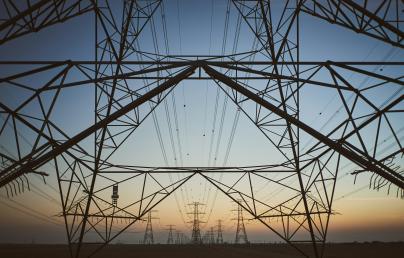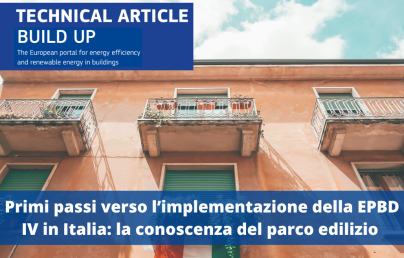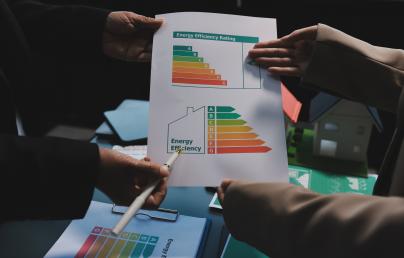
Tackling barriers to financing building renovation: an overview of selected EU initiatives
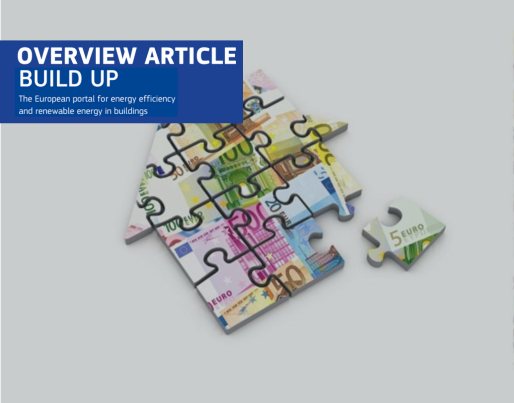
Tackling barriers to financing building renovation: an overview of selected EU initiatives
While the path to decarbonising Europe's building sector is fraught with challenges, adopting diverse and innovative financing mechanisms for building renovation is crucial to achieving the objectives of the European Green Deal. This article provides a non-exhaustive overview of the current financial instruments available for stimulating building renovation in the EU, sheds light on the obstacles impeding access to these resources and explores ongoing policy efforts and solutions to accelerate the transition towards a more energy-efficient built environment.
Photo by Mediamodifier from Pixabay
Introduction
Net zero greenhouse gas emissions by 2050 and economic growth decoupled from resource exploitation, all without leaving anyone behind: this is how the objectives of the European Green Deal can be summarised. If no one is to be left behind, everyone must have access to a sustainable and affordable place to live.
The building sector in Europe accounts for one-third of greenhouse gas emissions and around 40% of total energy consumption, with 85% of buildings constructed before 2000, 75% of which have poor energy performance.
The revised Energy Performance of Building Directive (EPBD), which is in natural accord with the objectives of the Green Deal, aims to decarbonise the entire building sector by 2050 and sets intermediate goals for 2030. To reduce emissions, the EU invests an average of €764 billion per year and the Commission estimates a €477 billion annual green investment gap to meet the 2030 target, bringing the total needed to €1,241 billion, or 7.8% of EU GDP.
Renovating buildings is crucial to meeting these targets but demands significant financial resources. Many property owners lack the economic means to undertake retrofitting independently. Given the scale of the investment needed, public capital is not sufficient, and private intervention is required. However, several barriers impede the necessary pace of renovation.
These barriers include split incentives, which occur when there is a misalignment of benefits and costs among different parties. For example, the owner may bear the costs of energy efficiency improvements in a dwelling, while the tenant reaps the benefits in lower energy bills, potentially resulting in higher rent but still not balancing the cost/benefit ratio.
This situation is complicated by a lack of sufficient information about these costs and benefits, as well as by high initial investment costs. Furthermore, private capital is limited because investment in energy efficiency in buildings, especially for small projects, is considered risky.
The payback period is often a significant obstacle. When an intervention has a long payback period, it can be discouraging for building owners and for investors. Frequently, the short-term business models of companies that finance energy efficiency interventions in buildings lead to a preference for interventions with shorter payback periods, such as sealing air leaks around doors, windows and other areas instead of performing a comprehensive wall insulation. This approach, however, overlooks which intervention is genuinely the most suitable for the specific situation.
From a financier’s perspective, energy efficiency projects are challenging due to their small scale, high transaction costs, and the difficulty in accurately predicting energy savings. These barriers are compounded by a lack of standardisation: each building has its own characteristics, which depend on several factors ranging from the year of construction to geographical features of the surrounding area, making each efficiency intervention unique. Therefore, it is difficult for investors to aggregate small investments in building renovation in order to refinance their debt. This also makes the underwriting of energy renovation loans more complicated where the amounts are usually modest, leading to higher transaction costs. Investors do not usually consider the cost savings generated through efficiency when assessing the creditworthiness of the investment, which usually depends on the borrower rather than the project itself.
Despite these challenges, various financing mechanisms for building renovations have been adopted by Member States’ governments, regional authorities, local municipalities, and private entities (such as foundations, NGOs, energy service companies (ESCOs), and financial institutions) across the European Union. An ENERGATE report from 2023, analysing 65 case studies across 18 European countries, highlights several predominant financial mechanisms:
- Grants are commonly provided by governments or private foundations and non-profit organisations. Grants are non-refundable and low risk but have stringent eligibility criteria and limited budgets.
- Subsidies are typically offered by government agencies as tax incentives and deductions.
- Debt Financing includes green loans and energy efficiency mortgages (1) , often combined with public funding sources like grants, subsidies, and tax incentives.
- Equity (e.g. household savings) from the building owner remains one of the main sources of finance for building renovation.
- In Energy Performance Contracts (EPCs) an Energy Service Company (ESCO) covers some or all initial costs for energy efficiency investments. The ESCO is repaid through the financial savings from the achieved energy savings.
There are also other promising financial means that remain yet underexplored:
- Crowdfunding is particularly well-suited for small projects that might not gain access to traditional financial resources.
- On-bill/tax finance, where the costs of renovation are repaid through utility bills/local taxes.
- Energy communities where individuals, households, or organisations collaborate also in the field of energy, are increasingly involved in the field of renovation. At the EU level the Support Service for Citizen-Led Renovation is designed to empower energy communities to oversee energy-saving renovations in buildings. To date, it has facilitated and continues to facilitate pilot projects in several EU countries, with a recent call for tenders now closed.
Each financing method carries inherent risks. For instance, regarding EPCs, ESCOs may focus on the most profitable measures, and accurately measuring energy savings can be challenging. Loans and mortgages, on the other hand, might deter property owners due to additional debt and may be inaccessible to vulnerable groups.
To address these issues, the EU and its Member States have introduced various financial instruments to support building renovations. They have also promoted the establishment of one-stop shops, which provide comprehensive support to citizens and property owners in navigating the technical, legal, and financial complexities of renovation projects.
EU policy and financial framework
The revised Energy Performance of Buildings Directive plays a crucial role in boosting the energy performance of buildings across the EU, particularly through renovation efforts.
It aligns with broader EU goals to reduce greenhouse gas emissions by at least 60% in the building sector by 2030 compared to 2015 levels, ultimately aiming for a decarbonised building stock by 2050 working in synergy with other policies of the European Green Deal, among these the revised Energy Efficiency Directive and the revised Renewable Energy Directive.
The Directive aims to accelerate the renovation of buildings, especially those with the lowest energy performance. This includes setting minimum energy performance standards for non-residential buildings and promoting deep energy renovations in both residential and non-residential sectors. Member states are mandated to develop national Building Renovation Plans, which outline strategies for achieving energy efficiency and decarbonisation targets through renovation activities.
Article 17 of the directive outlines the role of member states in providing financial incentives for building renovation. Member states must provide the necessary tools to address market barriers, such as high upfront costs, facilitate access to finance, and remove non-economic barriers to renovation, while considering the interests of both owners and tenants, with special attention to the most vulnerable.
This article also mentions the major investment funds available at the EU level for financing building renovation: the Recovery and Resilience Facility, the Social Climate Fund, the Cohesion Fund, and InvestEU.
The Recovery and Resilience Facility, established by the EU to help member states cope with the COVID-19 emergency, includes support for building renovation among its many objectives. To qualify for these funds, each state must develop a National Recovery and Resilience Plan, detailing how the funds will be implemented, including the scope of the transition to a low-carbon economy, of which building redevelopment is an integral part.
The Social Climate Fund is a resource from which member states can draw to support vulnerable households during the energy transition. Building renovation is one of the areas covered by this fund.
The Cohesion Fund, while serving broader purposes, is also useful for renovation. It supports the most distressed economies in the Union and employs instruments such as loans, guarantees, and equity to support projects.
The InvestEU programme addresses the EU's long-term funding needs by combining private and public investments. It focuses on financing key priorities such as green and digital transitions, innovation, and social investments, including building renovation.
Article 17 also lists the financing instruments through which member states can support the mobilisation of investments:
‘energy efficiency loans and mortgages for building renovation, energy performance contracting, pay-as-you-save financial schemes, fiscal incentives (for example reduced tax rates on renovation works and materials), on-tax schemes, on-bill schemes, guarantee funds, funds targeting deep renovations, funds targeting renovations with a significant minimum threshold of targeted energy savings and mortgage portfolio standards’
With Article 29, the directive aims to make Member States (MS) responsible for promoting building renovations to enhance energy efficiency. MS are required to raise awareness among market actors, such as building owners, about best practices for energy efficiency. One of the key duties of the MS is to inform building owners about the available financial instruments that can help improve energy performance and reduce reliance on fossil fuel boilers.
Additionally, the article highlights the European Commission's commitment to ‘continue and further intensify its information services’ to support the use of available funds, with a focus on facilitating access to financing channels that also support building renovation efforts.
Among these, we have not yet mentioned the European Regional Development Fund (ERDF), an instrument designed to support regional development in the EU, with the additional objective of facilitating the local transition to a low-carbon economy, including support for building renovation.
The Directive also promotes the adoption of Building Renovation Passports (BRP) to ensure that building owners or tenants are informed about strategies for improving building energy efficiency and provide details on financial tools available for energy renovations.
Other Union initiatives that aim to provide financial incentives for building renovation, either fully or partially, include:
The European Local Energy Assistance (ELENA) is tailored to local and regional authorities, providing essential technical assistance and funding for developing and implementing sustainable energy and climate action plans. ELENA's support extends to energy audits, developing energy efficiency plans, and preparing project proposals.
The LIFE programme stands out for its emphasis on environmental and climate action projects, including those aimed at building renovation. Through the topic ‘Project Development Assistance for sustainable energy investments’ (PDA), the programme aims to help public and private developers advance large-scale energy efficiency and renewable energy projects in Europe. Its focus is on overcoming financial, technical, and legal barriers to create scalable, innovative solutions for sustainable energy investments. Building renovation is included in the scope of PDA.
The European Fund for Strategic Investments seeks to bridge the EU's investment gap by leveraging private financing for essential projects that the market cannot fund independently. It will target investments in infrastructure, innovation, and provide risk finance for small businesses and SMEs.
The European Energy Efficiency Financing Coalition is following the work done by the Energy Efficiency Financial Institutions Group (EEFIG), particularly with the EEFIG Underwriting Toolkit, which helps financial institutions increase their investment in energy efficiency. By creating a platform for collaboration on energy efficiency financing among EU countries, financial institutions, and the Commission, the coalition aims to foster a favourable market for energy efficiency investments and increase private funding to meet EU energy and climate targets for 2030 and 2050. It facilitates the implementation of financial instruments under EU programs, promotes these programs to encourage private investment, and supports the objectives of the EED and EPBD.
Among the many initiatives operating at a national level and using European funds is the French ‘MaPrimeRénov’ and, by the end of 2022, around 700,000 households had benefited from it. This initiative is 70% funded by the EU's Recovery and Resilience Facility (approximately 1.4 billion). It provides grants for energy-efficiency in residential buildings, particularly through thermal renovation. The level of aid is based on the income of the applicants, with support covering up to 90% of the renovation costs for the most modest income brackets.
In Germany, the KfW Development Bank offers various loans and grants for energy-efficient renovations through its ‘Energy-efficient Renovation’ programme. KfW’s energy-efficient construction and refurbishment programmes have reduced public budget pressure by up to €10.6 billion.
On this page, you can get a comprehensive overview of national financial instruments for renovation within the European Union.
This 2021 report, on the other hand, highlights good practices in financial support for renovation in various European realities at regional and local level. These include the project in Călărași, Romania, that focused on renovating social housing units to improve energy efficiency and living conditions for low-income families, leveraging EU funds and local support, or the renovation projects in Karczew and Plock, Poland, that used public-private partnerships and ESCO financing schemes, respectively. The Karczew project, costing around €2.7 million, received additional funding from national environmental programmes, while the €7.5 million Plock project is solely financed by the private company, with energy savings expected to repay the investment in 17 years.
Other best practices on a regional and local scale can be found in the next section.
European projects (non-exhaustive list)
Energy Efficient Mortgage Initiative (several H2020 / LIFE fundings)
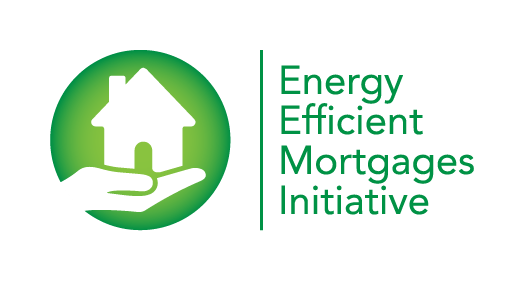
The European Energy Efficient Mortgage Initiative (EEMI) promotes green mortgages, which offer favourable terms to incentivise property owners to enhance energy efficiency. By integrating energy efficiency into mortgage lending, EEMI supports sustainable building renovations, reduces energy consumption, lowers carbon emissions, and aligns with the EU's climate goals.

The European City Facility (EUCF) project supports local authorities across Europe in developing sustainable energy investment projects. It provides financial, technical, legal, and capacity-building aid to overcome barriers, develop credible investment packages, and mobilise financing, particularly for small and medium-sized municipalities.
H2020
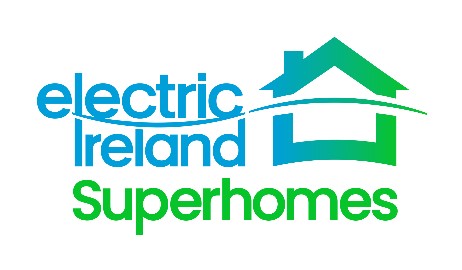
Superhomes2030 aims to scale retrofits in Ireland, growing from 100 annually in 2019 to 3,000 by 2030, achieving 48 GWh energy savings and 167 kilotonnes CO2 reduction. It includes independent financing of over €67 million annually, creating 13,000 jobs, and exploring international expansion.

TIGER aims to enhance energy efficiency in European Social Housing by investing over €16M in energy renovations across 126 buildings in Abruzzo, targeting 8.7 GWh/y energy savings and a 1,760 tCO2/y reduction. It tackles energy poverty, develops a replicable model, and employs innovative funding mechanisms.
Horizon Europe
FinEERGo-Dom is a project aimed at refining and implementing guaranteed financing schemes for energy efficiency and renewable energy in deep renovations of buildings across five EU countries, inspired by the successful Latvian LABEEF model. It targets public and residential buildings.

The ORFEE project establishes a resource platform to consolidate and support third-party financing companies (STF) in energy efficiency renovations. ORFEE enhances operational processes, quality standards, financial structure, and collaboration with banks for energy-efficient financing.

RenOnBill promotes on-bill schemes for deep energy renovations in Germany, Italy, Lithuania, and Spain. The project fosters collaboration between utilities and financial institutions, aiming to scale up investments, develop business models, and support EU-wide replication to meet energy and CO2 targets.
Life Projects

The SMARTER4EU initiative aims to launch sustainable Green Homes and Green Mortgage programs in the EU, Portugal, Spain, and Ukraine, building on previous successes. It aligns with the EU Taxonomy, promoting transparency, climate risk management, and energy-efficient certifications.
Conclusion
Decarbonising Europe's building sector by 2050 requires addressing financial barriers, increasing private investment, and expanding access to innovative funding mechanisms. Leveraging diverse financial tools and fostering collaboration between public and private sectors, while building on existing good practices across the EU, are essential to accelerating energy-efficient renovations and achieving the European Green Deal’s objectives of a sustainable, low-carbon built environment.
(1) A mortgage is a specific type of loan used to purchase real estate, where the property itself serves as collateral whereas a loan doesn’t necessarily require a collateral. Most small renovation projects are funded through customer loans which have higher interest rates than mortgages.
